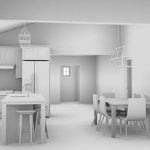Are you wondering how to decorate your home garden? A beautifully decorated garden can enhance the overall aesthetic of your home and provide a relaxing and enjoyable outdoor space for you and your family. In this article, we will explore the importance of decorating your home garden and provide valuable tips and ideas on how to create a stunning outdoor oasis.
When it comes to creating a welcoming and visually appealing home garden, the design and decoration play a crucial role. From planning the layout to choosing the right plants and adding decorative elements, every step contributes to the overall beauty of your garden.
In addition to enhancing the visual appeal of your garden, decorating it can also create a peaceful and tranquil environment for relaxation, as well as provide a space for entertaining guests. Whether you have a small backyard or a spacious lawn, there are endless possibilities for transforming your outdoor space into a charming retreat. Join us as we delve into the world of home garden decoration and discover creative ways to elevate the look of your outdoor sanctuary.
Planning Your Garden Design
When it comes to planning your garden design, there are several important considerations and tips to keep in mind to ensure that your outdoor space is both functional and visually appealing. One of the first things to consider is the layout of your garden.
Think about how you want to use the space – whether it’s for entertaining, gardening, relaxing, or a combination of these activities. Once you have a clear idea of how you want to use your garden, you can start planning the design accordingly.
Consider the different areas within your garden, such as seating areas, pathways, and planting beds. It’s important to create a cohesive and well-thought-out design that flows seamlessly from one area to another. You can use tools like graph paper or online garden planning software to sketch out different layout ideas before making any final decisions.
Another important consideration when planning your garden design is the climate and environmental conditions in your area. Take note of factors such as sunlight exposure, soil type, and average rainfall, as these will all influence which plants will thrive in your garden. Additionally, consider any existing structures or features in your yard that you may want to incorporate into your garden design.
Lastly, think about the overall style or theme you want for your garden. Whether it’s a formal English garden with neatly-trimmed hedges and symmetrical plantings, or a more casual wildflower meadow-inspired look, having a clear vision for the aesthetic of your garden will help guide your design decisions.
- Consider how you want to use the space
- Sketch out different layout ideas
- Take note of climate and environmental conditions
- Consider existing structures or features
- Have a clear vision for the aesthetic of your garden
With these considerations in mind, careful planning of your garden design will lay the foundation for creating a beautiful and functional outdoor space that reflects your personal style and enhances the overall appeal of your home.
- Layout of Your Garden
- Climate and Environmental Conditions
- Overall Style or Theme
Choosing the Right Plants for Decoration
When it comes to decorating your home garden, choosing the right plants is crucial in creating a vibrant and visually appealing outdoor space. Whether you have a small balcony garden or a sprawling backyard, the right selection of flowers, shrubs, and trees can transform your garden into a stunning oasis. Here are some tips on how to choose the right plants for decoration to enhance the beauty of your home garden.
Flowers are an essential part of any garden design and can add pops of color and fragrance. When selecting flowers for your garden, consider factors such as sunlight requirements, water needs, and blooming seasons. Some popular choices for flower gardens include roses, tulips, daisies, and lavender. To create visual interest, mix different types of flowers with varying heights and textures.
In addition to flowers, shrubs and trees can also be used to add structure and greenery to your garden. When choosing shrubs, consider their size at maturity and how they will complement the overall design of your garden. Evergreen shrubs such as boxwood or holly can provide year-round interest with their foliage.
Trees can also be used to provide shade and vertical interest in your garden. Consider ornamental trees such as Japanese maple or flowering trees like cherry blossoms for a striking focal point.
| Plants | Considerations |
|---|---|
| Flowers | Sunlight requirements, water needs, blooming seasons |
| Shrubs | Size at maturity, overall design complement |
| Trees | Shade provision, vertical interest |
Choosing the right plants for decoration in your home garden is all about creating a balanced and harmonious landscape while considering factors like climate, soil conditions, and maintenance requirements. By carefully selecting flowers, shrubs, and trees that suit your gardening style and personal taste preferences you can create a beautiful outdoor space that you will enjoy for years to come.
Adding Decorative Elements
When it comes to decorating your home garden, adding decorative elements such as garden statues, fountains, and pergolas can elevate the overall aesthetic and ambiance of the space. These elements can serve as focal points and create a sense of elegance and tranquility in your outdoor sanctuary. Here are some tips on how to incorporate these decorative elements into your garden design.
Choosing Garden Statues
Garden statues come in various sizes, materials, and designs, so it’s essential to choose ones that complement the style of your garden. Consider the theme or mood you want to convey – whether it’s classical, whimsical, or modern – and select statues that align with that vision. Place them strategically throughout the garden to add visual interest and create a harmonious flow within the landscape.
Installing Fountains
A fountain can serve as a central focal point in your garden while also providing soothing sounds of running water. When choosing a fountain, consider the size of your outdoor space and select one that is proportionate to the area. Additionally, think about the style of fountain that best suits your garden – whether it’s a tiered design for a traditional look or a contemporary sculpture-like fountain for a modern touch.
Building Pergolas
Pergolas not only provide shade and structure in a garden but also offer opportunities for hanging plants, string lights, or creating cozy seating areas. When deciding on a pergola design, consider the architectural style of your home and the overall theme of your garden. Whether you opt for a simple wooden structure or an elaborate metal pergola, this element can add depth and dimension to your outdoor space.
By incorporating these decorative elements into your home garden design, you can create an inviting and visually appealing oasis right outside your door. These features allow you to infuse personal style into your outdoor space while also enhancing its natural beauty.
DIY Garden Décor Projects
Decorating your home garden with DIY projects is a fun and cost-effective way to add personality and creativity to your outdoor space. With a little bit of time and effort, you can transform your garden into a unique and charming area that reflects your personal style. Here are some creative and budget-friendly DIY garden dcor ideas to inspire you.
Repurposed Materials
One of the best ways to decorate your home garden on a budget is by using repurposed materials. Old pallets can be transformed into vertical planters, while vintage tin cans can be painted and used as colorful flower pots. Get creative with items you already have or find inexpensive materials at thrift stores and yard sales.
Handmade Garden Art
Creating your own garden art is a fantastic way to add character to your outdoor space. Consider making mosaic stepping stones, hand-painted rock markers, or even a homemade birdhouse. These personalized touches will make your garden feel like an extension of your home.
Upcycled Furniture
If you have old furniture that you no longer use, consider upcycling it for use in your garden. A worn-out bench can be given new life with a fresh coat of paint, while an old dresser can be repurposed as a unique planter. Upcycled furniture adds charm and functionality to your garden without breaking the bank.
By incorporating these DIY projects into your home garden, you can create a space that is not only beautiful but also reflects your unique style and creativity. Whether you’re repurposing materials, crafting handmade art, or upcycling furniture, there are endless possibilities for adding personal touches that will make your garden truly one-of-a-kind.
Incorporating Lighting
When it comes to creating a beautiful and welcoming atmosphere in your home garden, incorporating lighting is a key element. Proper lighting not only enhances the overall beauty of your garden but also allows you to enjoy its ambiance even after the sun goes down. However, many homeowners may be unsure about how to decorate their home garden with lighting in an effective and aesthetically pleasing way.
One of the first considerations when incorporating lighting into your garden design is to determine the purpose of the lights. Are they purely for decoration, or are they also meant to provide illumination for pathways and seating areas? Once you have a clear idea of their purpose, you can then choose from a variety of lighting options such as string lights, solar-powered lanterns, LED spotlights, and decorative light fixtures.
In addition to functionality, it’s important to consider the aesthetic aspect of garden lighting. The right combination of lights can create a magical and enchanting ambiance in your garden. Soft, warm white lights can add a cozy and inviting feel, while colored lights can provide a fun and festive atmosphere for outdoor gatherings. By carefully selecting and positioning your lights, you can highlight specific features of your garden such as fountains, statues, or architectural elements.
| Consideration | Lighting Option |
|---|---|
| Purpose (decoration or illumination) | String lights, solar-powered lanterns, LED spotlights |
| Aesthetic Aspect | Soft warm white lights for cozy feel; colored lights for fun atmosphere |
Maintaining Your Garden Décor
Once you have successfully decorated your home garden, it is important to maintain its beauty for the long term. Proper maintenance will ensure that your garden continues to look stunning and appealing. Here are some tips for maintaining your garden dcor:
- Regular watering: It is crucial to water your plants regularly to keep them healthy and vibrant. Be sure to water them according to their specific needs, as some plants require more water than others.
- Weeding: Regularly remove any weeds that may appear in your garden. Weeds can compete with your plants for nutrients and sunlight, so it is important to keep them in check.
- Pruning and trimming: Keep your shrubs, trees, and flowers in shape by pruning and trimming them as needed. This will help promote healthy growth and maintain the overall aesthetic of your garden.
In addition to these basic maintenance tasks, it is also important to keep an eye out for any signs of pests or disease in your garden. Addressing these issues promptly will help prevent any serious damage to your plants.
Remember that maintaining your garden dcor is an ongoing process, but with proper care and attention, you can enjoy a beautiful and inviting outdoor space for years to come. By following these maintenance tips, you can ensure that your home garden remains a source of pride and joy.
Finally, if you’re interested in more detailed information about maintaining a Garden Decor, be sure not miss our next article.
Showcasing Your Personal Style
One of the most rewarding aspects of decorating your home garden is the opportunity to showcase your personal style. Your garden can be a reflection of your unique tastes and personality, creating a space that is truly one-of-a-kind. When it comes to adding personalized dcor to your garden, the possibilities are endless.
One way to showcase your personal style in your home garden is by incorporating handcrafted or customized dcor elements. Consider adding personalized stepping stones with meaningful quotes or custom-made garden signs with your family name or favorite sayings. You can also create unique planters using reclaimed materials or paint designs on them that reflect your personal aesthetic.
Another way to add a touch of personal style to your home garden is by integrating artistic elements such as sculptures, mosaics, or handmade wind chimes. These pieces can serve as focal points in the garden and provide an opportunity for self-expression. Whether you have a preference for modern, minimalist design or bohemian eclectic style, there are countless ways to incorporate art into your garden dcor.
Lastly, consider utilizing color and texture to infuse your personal style into the garden. Choose plants and flowers that resonate with you and align with the overall theme you want to convey. Whether you prefer vibrant blooms or a more subdued color palette, how you use color can make a big impact on the overall look and feel of your garden.
In summary, showcasing your personal style in your home garden involves embracing creative freedom and incorporating elements that resonate with you on a personal level. By incorporating handcrafted dcor, artistic elements, and color choices that reflect your tastes, you can create a truly unique and personalized outdoor space that speaks to who you are. Consider this when considering how to decorate my home garden; whatever reflects “you” within our beautiful corners must follow.
Conclusion
In conclusion, decorating your home garden is an enjoyable and rewarding process that allows you to showcase your creativity and personal style. By carefully planning your garden design, choosing the right plants, adding decorative elements, incorporating lighting, and maintaining your dcor, you can create a beautiful outdoor space that brings joy and relaxation to you and your loved ones.
Whether you have a green thumb or not, there are countless ways to enhance the beauty of your garden and make it a welcoming oasis.
One of the key aspects of enjoying a beautifully decorated home garden is to regularly maintain its upkeep. By regularly tending to your plants, cleaning decorative elements, and keeping an eye on lighting fixtures, you can ensure that your garden continues to look its best for years to come. Additionally, incorporating personalized touches such as unique DIY projects or showcasing items that hold sentimental value can truly make your garden feel like an extension of your home.
In the end, a well-decorated home garden provides a peaceful retreat where you can unwind and reconnect with nature. It also serves as a wonderful space for entertaining guests or simply enjoying some quiet time alone.
So take the time to explore different ideas for dcor and let your imagination guide you in creating a garden that reflects your individual personality and tastes. With these tips in mind, you will surely find joy in transforming your outdoor space into a place of beauty and tranquility.
Frequently Asked Questions
How Can I Decorate My Garden at Home?
There are many ways to decorate your garden at home. You can start by adding colorful flowers and plants, creating a welcoming path with stepping stones, installing outdoor lighting, and adding decorative elements like statues or fountains.
How Do I Accessorize My Garden?
When accessorizing your garden, think about adding functional and aesthetic items such as bird feeders, wind chimes, decorative pots or planters, outdoor furniture, and even pieces of artwork. These accessories can add personality and charm to your outdoor space.
How Do You Place Garden Decor?
Placing garden decor strategically can make a big difference in the overall look of your garden. Consider the scale and proportion of the decor in relation to your garden size, group similar items together for impact, create focal points with larger pieces, and don’t overcrowd the space so that each piece has room to shine.

I’m thrilled to be your companion on this exciting journey through the world of home decor and design. With a passion for turning houses into homes and a keen eye for the finer details, I’m here to help you transform your living spaces into beautiful, functional, and meaningful havens.





